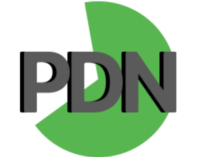How to Choose the Best Car, Home, and Life Insurance
Advertising
Choosing the right insurance for your car, home, and life can be a daunting task. With a myriad of options available, it’s critical to understand what each policy offers and how it aligns with your needs.
To secure the best coverage, prioritize evaluating policies from reputable companies, comparing quotes, and assessing the financial stability of the insurers.

When selecting car insurance, focus on companies known for their robust financial health and customer service. For home insurance, consider the specific risks in your area and ensure the policy covers potential damages comprehensively. For life insurance, prioritize policies that provide sufficient coverage for your loved ones’ future financial needs.
Exploring bundles can also be advantageous. Many companies, such as Auto-Owners, offer significant discounts when you bundle car and home insurance. Similarly, Nationwide provides substantial savings and convenience through bundled packages. These discounts could substantially reduce your premiums, making comprehensive coverage more affordable.
Choosing the Best Car Insurance
Choosing the best car insurance involves understanding the types of coverage available, knowing what factors impact your rates, comparing different providers, and identifying opportunities for discounts and savings.
Understanding Car Insurance Coverage
Car insurance policies generally consist of several types of coverage. Liability insurance covers injuries and physical damage you cause to others. Collision coverage helps pay for repairs to your vehicle following an accident. Comprehensive coverage protects against non-collision-related damages such as theft, vandalism, and natural disasters. Additionally, uninsured/underinsured motorist coverage safeguards you if you’re involved in an accident with a driver who lacks adequate insurance. It’s crucial to evaluate these options in detail to ensure you’re adequately protected.
APPLY NOW!
Factors That Affect Car Insurance Rates
Your car insurance rates depend on multiple factors. Age and driving history are significant; younger drivers and those with accidents or violations typically face higher premiums. Location also plays a role, with urban areas often seeing higher rates due to increased traffic and theft risks. The type of vehicle you drive impacts rates, with high-end or sports cars usually costing more to insure. Credit score and annual mileage can also influence your rates. Understanding these factors can help you manage and potentially reduce your premium costs.
Comparing Car Insurance Providers
When comparing car insurance providers, customer satisfaction, financial stability, and coverage options are key areas to evaluate. Tools such as Consumer Reports provide ratings based on surveys and independent assessments. Check for ease of claims processing and availability of customer support. Comparing quotes from multiple insurers can help identify the best value for your needs. NJM and others have been noted for their competitive rates and solid service, as detailed by NerdWallet.
Discounts and Savings on Car Insurance
There are various ways to save on car insurance. Safe driver discounts reward those without accidents or violations. Multi-policy discounts may apply if you bundle car insurance with home or life insurance. Good student discounts are available for young drivers with good grades. Low mileage discounts benefit those who drive less annually. Always ask potential insurers about available discounts. Resources such as Policygenius can help identify these opportunities to maximize your savings.
Selecting Home and Life Insurance
Choosing the right home and life insurance involves understanding your coverage needs, comparing policies, and considering potential cost savings through bundling.
Protecting Your Home with the Right Insurance
When selecting home insurance, focus on getting coverage that protects against various risks like fire, theft, and natural disasters. Check the insurer’s financial stability and customer service reputation. Companies with a high rating from agencies like A.M. Best indicate a lower risk that they can’t pay claims.
Ensure that your policy covers the replacement cost of your home and personal property, not just actual cash value, which factors in depreciation. It’s also important to know whether you need additional flood or earthquake insurance, which are typically not included in standard home policies.

Determining Life Insurance Needs
Assessing your life insurance needs starts with calculating how much coverage you require to support your dependents in your absence. Factors to consider include outstanding debts, mortgage balances, future education costs, and daily living expenses. Life insurance policies come primarily in two forms: term life and whole life.
Term life insurance offers coverage for a specific period, typically 10, 20, or 30 years. It tends to have lower premiums compared to whole life insurance. Whole life insurance, on the other hand, provides lifelong coverage and has a cash value component that can grow over time, which may justify its higher cost.
Evaluating Policies and Premiums
To find the most suitable policy at the best price, compare quotes from multiple insurance providers. Look at both the coverage options and premiums. Use online comparison tools or consult with an insurance agent to understand the nuances between different plans.
Consider policy features such as riders for accelerated death benefits, waiver of premium, and guaranteed insurability, which can tailor a policy to your specific needs. Don’t forget to verify if the insurer offers discounts for things like a bundled home and life insurance, safety features in your home, or healthy lifestyle choices.
Bundling Insurance Policies
Bundling your home and life insurance policies with one provider can lead to substantial savings. Many insurers offer discounts if you purchase multiple policies, which reduces the overall premium costs. This approach also simplifies management as you deal with a single company for policy renewals, payments, and claims.
Evaluate the total cost and benefits of bundling offers. Sometimes, bundled prices can be higher than individual policies from different providers. Make sure the bundled package meets your coverage needs and that each policy maintains adequate protection. Using a reputable insurer for all your policies ensures you get consistent, reliable service.




